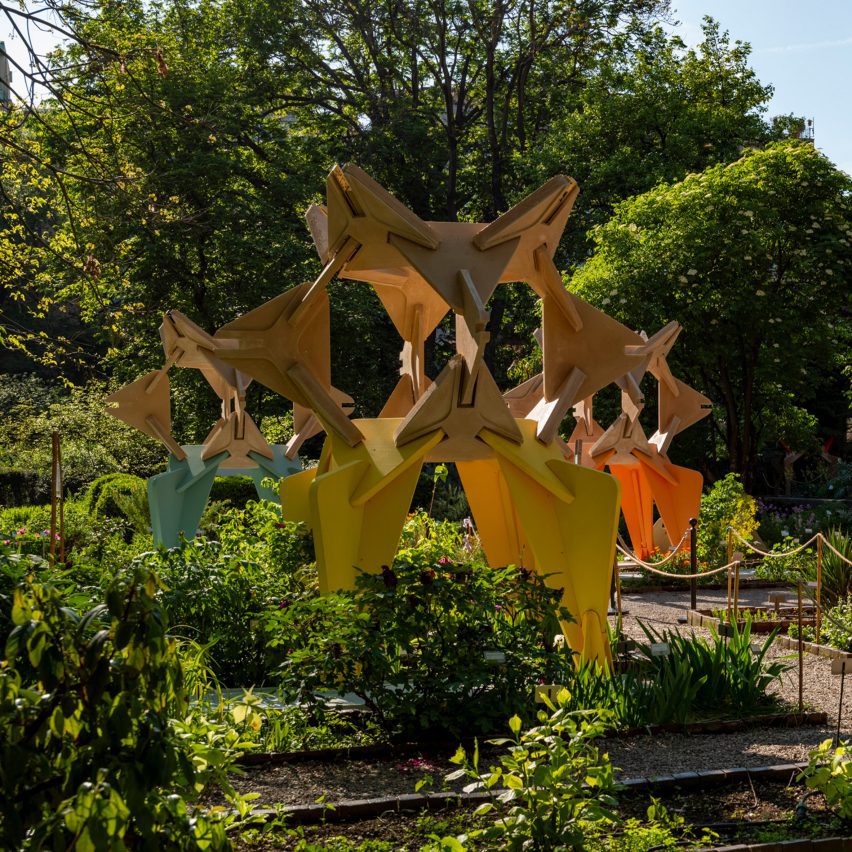SunRice installation explores new uses for world's "most widely consumed food"

Italian studio Carlo Ratti Associati and architect Italo Rota used a kind of artificial stone made with waste rice husks to create this modular installation in the Brera botanical garden for Milan design week.
The SunRice installation transformed the garden into a pathway that allowed visitors to explore the multiple uses of rice ? "from food to experimental construction material".
The SunRice installation premiered at Milan design week
An experiential journey through the gardens showed how rice transforms from a plant into an ingredient used in cooking before demonstrating how rice waste can become a raw material with architectural applications.
"Rice is the most widely consumed food in the world," said Ratti. "And this is precisely why it has such an extensive and profound cultural significance, opening up so many uses and as-yet unexplored avenues for experimentation." "As we explore alternative ways to feed the planet's growing population so, too, must we research the ways we can use these materials for sustainable construction."
It is made using a geopolymer made with waste rice husks
The material developed by Milenese start-up Ricehouse is a geopolymer ? a kind of artificial stone created by chemically reacting silica-rich materials with an alkaline solution, imitating how rocks are formed in nature.
Geopolymers promise to offer a more sustainable alternative to concrete that does not rely on emissions-intensive cement as a bind...
| -------------------------------- |
| Korean Dandelion Farm by Archihood WXY |
|
|
Villa M by Pierattelli Architetture Modernizes 1950s Florence Estate
31-10-2024 07:22 - (
Architecture )
Kent Avenue Penthouse Merges Industrial and Minimalist Styles
31-10-2024 07:22 - (
Architecture )






